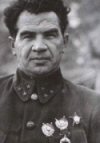Mad Russian
Posts: 13256
Joined: 3/16/2008
From: Texas
Status: offline

|
A recent question was asked about how the sequence of scenarios took place and what the thought process was used to create them.
I was stationed in West Germany in 1974-1977 with the 23rd Engineer Battalion Combat, 3rd Armored Division. I served in Battalion HQ and as such had access to all of the division's plans since our battalion supported all 3 Brigades. I took the premise of the surprise attack and started at the border and moved toward the Rhine River. Both in locations where the Soviets would push and where NATO would defend. Many of these locations are from actual NATO plans. As many of you have confirmed, those plans apparently stayed active long after I left.
The two main objectives in West Germany are river crossing sites and road networks. You will see those displayed prominently in my selections for objectives. It is hard to depict an overwhelming attack like this one without falling into the trap of depicting the same battle over repeatedly. Outnumbered NATO forces hold, fall back, hold again....rinse and repeat. Which gave me my toughest challenge of creating different terrain to fight over with as large a variety of maps possible with as different a tactical situation as possible. NATO counterattacks were plugged in wherever I thought they would be historically feasible. The Wolves Campaign, for instance, was an actual NATO plan at one time.
War has an ebb and flow to it. Attack, break the line, run for the objective, reserves arrive to slow/stop the advance, restore the line. Time after time. But WHEN...that's the $64K question...WHEN. When do they break the line, when do they advance in the open, when do they counterattack, and most importantly of all the questions - when do they use battlefield nuclear weapons? In writing the story line those were my most pressing questions and answers.
I had to write a storyline that was believable to all of you or this game wouldn't be played very long.
Many of those answers came from WW2 and how the Soviets attacked in the last 6 months of the war and the NATO expectations that I encountered while I was there. I not only served with the US Army but spent time with the Bundeswehr and BAOR. So, I got a pretty good idea of what everybody thought would happen and how.
The biggest surprise was how different the NATO nations played from one to another and who the strongest and weakest ones were. IMO, that is also one of the biggest strengths of the system.
Good Hunting.
MR
< Message edited by Mad Russian -- 3/18/2015 5:20:46 AM >
_____________________________
The most expensive thing in the world is free time.
Founder of HSG scenario design group for Combat Mission.
Panzer Command Ostfront Development Team.
Flashpoint Campaigns: Red Storm Development Team.
|
 Printable Version
Printable Version











 New Messages
New Messages No New Messages
No New Messages Hot Topic w/ New Messages
Hot Topic w/ New Messages Hot Topic w/o New Messages
Hot Topic w/o New Messages Locked w/ New Messages
Locked w/ New Messages Locked w/o New Messages
Locked w/o New Messages Post New Thread
Post New Thread